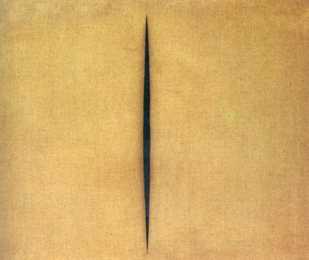 ^
Nació el 19 febrero 1885: Roberto Montenegro,
pintor mexicano quién murió el 13 octubre 1968.
^
Nació el 19 febrero 1885: Roberto Montenegro,
pintor mexicano quién murió el 13 octubre 1968. — Roberto Montenegro, artista polifacético, nació en la Ciudad de Guadalajara el 19 de febrero de 1885. Estudió en la Academia de San Carlos e incursionó a lo largo de su vida en muy variados estilos y vanguardias. En San Carlos conoce a Saturnino Herrán y a Diego Rivera, y en 1905, cuando recibiendo una beca del Gobierno de México, se traslada a París y a Madrid, entrando en contacto con diversos círculos literarios y artísticos; ahí conoce a Machado, Unamuno, Valle Inclán, Jean Cocteau y Juan Gris. Entre 1908-1909 viaja a Italia, pasando una temporada en Venecia, para posteriormente regresar a París y exponer en el Salón de Otoño. Al inicio de la Primera Guerra Mundial, huye a Barcelona; y algo muy importante de resaltar, es el hecho de que realiza entre 1915 y 1918 un mural en el Casino de Palma, cuando residía en Pollenza, Mayorca.
A su regreso a México, es convocado por José Vasconselos para realizar diversos murales en los edificios públicos en conjunto con otros artistas de gran renombre, como es el caso de Fernando Leal, Diego Rivera, Orozco y otros. Roberto Montenegro incursionó a lo largo de su vida, en diversidad de estilos y vanguardias. Tuvo la enorme libertad de que su obra tocara las diferentes tendencias que surgían en aquellos años, entre ellas el Art Nouveau, el Surrealismo y eventualmente el arte abstracto. Hacia 1921 a iniciativa suya y ayudado por el Dr. Atl , Adolfo Best Maugard y Jorge Enciso, se realiza en la Ciudad de México la primera exposición de Artes Populares. Después sería el fundador del Museo de Artes Populares.
Montenegro incursionó también en el mundo de la escenografía para la danza y el teatro. Igualmente participa en el rodaje de "Viva México" del cineasta soviético Sergei Eisenstein. De su vasta producción destacan lienzos influidos por la corriente fantástica, dentro de la cual llegó a alcanzar una personalidad muy fuerte y definitiva. Dentro de sus obras murales importantes, cabe destacar los realizados en la Capilla del exconvento de San Pedro y San Pablo, donde estuvo ubicada la Hemeroteca Nacional. Muere en la Ciudad de Morelia, Michoacán,
— Tehuana (70x70cm) [imagen >>>]
 La gran ruptura artística de Lucio Fontana — dicho sea en términos
teóricos y también materiales — ocurre en 1949, cuando empieza a realizar
sus telas con perforaciones (buchi), que serán sucedidas, una década más
tarde, por las telas con tajos (tagli), como en la obra aquí presentada.
Es evidente la naturaleza conceptualista y gestual de estas creaciones de
Fontana — que él llevará además a otros soportes, como el papel y el
metal —, y su sentido estético: al rasgar la tela y quebrar su continuidad,
acaba con la idea que de ella tuvo y tiene la pintura, la de una superficie
ilusoria capaz de albergar una representación ficticia; por lo tanto, recupera
la verdad de esa tela en beneficio de una nueva (forma de) creación. El
tajo, que conecta el anverso y el reverso del lienzo, integra el espacio
real a la obra y abre una vía de comunicación con el infinito, aboliendo
la necesidad de pintar.
La gran ruptura artística de Lucio Fontana — dicho sea en términos
teóricos y también materiales — ocurre en 1949, cuando empieza a realizar
sus telas con perforaciones (buchi), que serán sucedidas, una década más
tarde, por las telas con tajos (tagli), como en la obra aquí presentada.
Es evidente la naturaleza conceptualista y gestual de estas creaciones de
Fontana — que él llevará además a otros soportes, como el papel y el
metal —, y su sentido estético: al rasgar la tela y quebrar su continuidad,
acaba con la idea que de ella tuvo y tiene la pintura, la de una superficie
ilusoria capaz de albergar una representación ficticia; por lo tanto, recupera
la verdad de esa tela en beneficio de una nueva (forma de) creación. El
tajo, que conecta el anverso y el reverso del lienzo, integra el espacio
real a la obra y abre una vía de comunicación con el infinito, aboliendo
la necesidad de pintar.